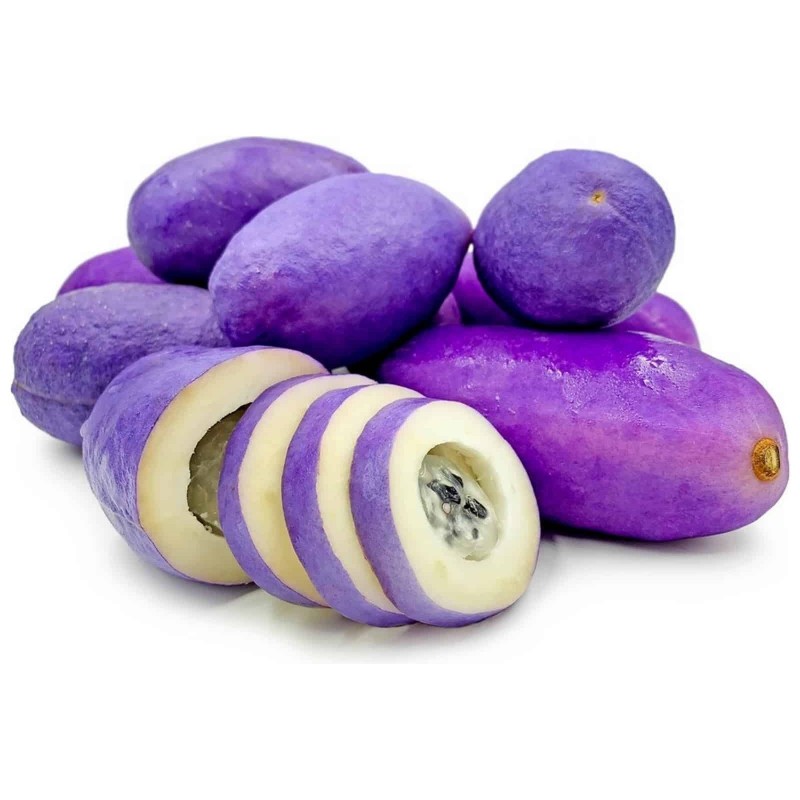
Best seller product

This plant is resistant to winter and frost.


















Akebia fruit has a purple color not often seen in nature. It is the size of a russet potato and is soft to the touch. A slice can be removed from the thick rind of a domesticated Akebi fruit, whereas the wild-grown
Akebia fruit has a purple color not often seen in nature. It is the size of a russet potato and is soft to the touch. A slice can be removed from the thick rind of a domesticated Akebi fruit, whereas the wild grown fruits must be allowed to split on their own indicating ripeness. Inside of the Akebi fruit is a sweet translucent white flesh (similar in look and texture to a lychee) with a taste somewhat like pear. The flesh is filled with shiny black seeds.
Seasons - Availability
Akebi fruit is only available for two weeks out of the year; its season is at the very beginning of fall.
Current Facts
Akebi fruit is both wild and cultivated. The exotic looking fruit is found in Japan during a very brief period at the end of the summer or early fall. Because of the short availability, distribution is somewhat limited to just a few stores and in limited quantity.
Applications
The inner flesh of the Akebi fruit is usually eaten fresh, slurped from the purple pod. Seeds can be spat out or eaten; it can be difficult to remove them from the gelatinous flesh. The pod itself can be cooked and is used very much like a vegetable in traditional Tohoku cuisine. It is stuffed, sautéed and deep-fried. The taste of the rind is bitter; to mellow the flavor, soak the unopened pod in water for thirty minutes to an hour.
Geography - History
Akebi fruit is native to the northern Tohoku region of Japan and has only been cultivated and available commercially in the last few decades. Research into the Akebi fruit has found that it has antiseptic and diuretic properties.
Recipe Ideas
Recipes that include Purple Akebi Fruit. One is easiest, three is harder.
Kyoto Foodie Japanese Fruit Akebi as Sauteed Vegetable (Miso Itame)
Seed propagation
Before sowing seeds, Akebia trifoliata scarify, then soak in warm water for 24 hours. Sowing to a depth of 0.7 cm. Cold stratification is required for 60-90 days, at + 4-5 ° C in a humid environment. The seed usually grows after 1 to 3 months at 15 ° C. The grown seedlings dive in separate pots and are grown in the greenhouse for the first year of life. Planted in late spring or early summer, after the last expected frost.
Data sheet

 Reviews (0)
Reviews (0)